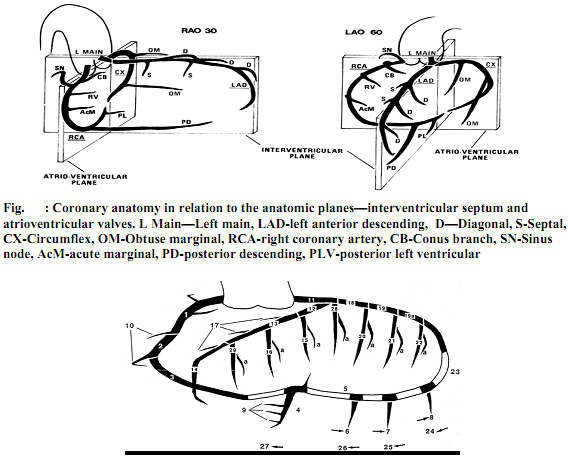Q. Explain Coronary Anatomy?
The main coronary trunks can be considered to lie in one of two orthogonal planes. The anterior descending and the posterior descending coronary arteries lie in the plane of the interventricular septum, whereas the right and left circumflex trunks lie in the plane of the atrioventricular valves.
Right Coronary Artery: 1: Proximal, 2: Middle, 3: Distal, 4: Posterior descending, 5: Posteroatrioventricular, 6: first posterolateral, 7: second posterolateral, 8: third posterolateral, 9: inferior septals, 10: acute marginals.
Left Coronary Artery: 11: Left Main, 12: Proximal left anterior descending, 13: Middle left anterior descending, 14: Distal left anterior descending, 15: first diagonal, 16: second diagonal, 17: septals, 18: Proximal circumflex, 19: Middle circumflex, 20: Distal circumflex, 21, 22, 23: first, second and third obtuse marginals, 23: left atrioventricular, 24, 25, 26: first, second and third posterolaterals, 27: left posterior descending, 28: Ramus intermedius, 29: Third diagonal.
